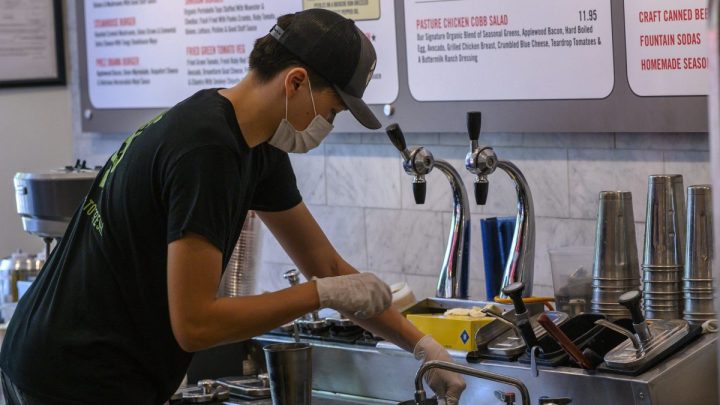
Gen Z teens are heading back to the workforce; older Zoomers, not so much
Gen Z teens are heading back to the workforce; older Zoomers, not so much

One consistent bright spot in this shifting labor market? Labor force participation among teenagers has been on a steady rise.
In March, 37.4% of Americans age 16 to 19 were actively employed or looking for work, according to the Labor Department. That’s up substantially from pre-pandemic levels, thanks in part to higher starting wages in the service industry.
But it’s a different story for slightly older members of Generation Z, born from 1997 to 2012. Participation rates in the 20 to 24 age bracket are still lagging.
Teenagers are not the easiest people to reach on a weekday morning. So I called up someone who hires a lot of them to figure out why more teens are working.
“In fact, we employ more teens today than I can remember ever having employed,” said Mason Ayer, who owns Kerbey Lane Cafe, an Austin-based comfort-food chain.
Before the pandemic, he said high school-aged kids were really only competitive for hostess and dishwasher jobs. But thanks to the tight labor market, “there’s opportunities for teens to come and wait tables at our restaurants and make upwards of $20 to $25 an hour,” Ayer said.
Higher starting wages have helped reverse a longstanding trend of declining teen workforce participation, said Ron Hetrick, a senior labor economist with Lightcast. Take his 19-year-old son. Last summer, he got a job at a local pool snack bar.
“Made an absolutely killing,” Hetrick said. As for the older Zoomers on the sidelines of the labor market, Hetrick has a hunch about what’s going on there too.
“The 20-, 24-year-olds were the bullseye of the COVID years,” he said. “They would have been starting out freshmen, sophomores, juniors in college.”
Because of that disruption, he said some of them put their higher education on hold. Others are slowing down or spacing out their college years, like his older kid.
“She was like, ‘I was robbed. I didn’t get as much on-campus time,’ so she purposefully kind of sandbagged the credits to stretch it out,” Hetrick said.
Another feature of becoming an adult during a pandemic? When it comes to job searches, “there seems to be less desire to just compromise,” said Nicole Smith, chief economist with Georgetown’s Center on Education and the Workforce. She said Zoomers are coming of age while workplace norms are changing.
“There’s a lot more thinking about job flexibility and thinking about work-life balance,” she said.
They’re more likely to hold out rather than say yes to their first real job offer. But if we see significant cooling in the labor market, Smith said workers won’t be able to be choosy.
There’s a lot happening in the world. Through it all, Marketplace is here for you.
You rely on Marketplace to break down the world’s events and tell you how it affects you in a fact-based, approachable way. We rely on your financial support to keep making that possible.
Your donation today powers the independent journalism that you rely on. For just $5/month, you can help sustain Marketplace so we can keep reporting on the things that matter to you.

















